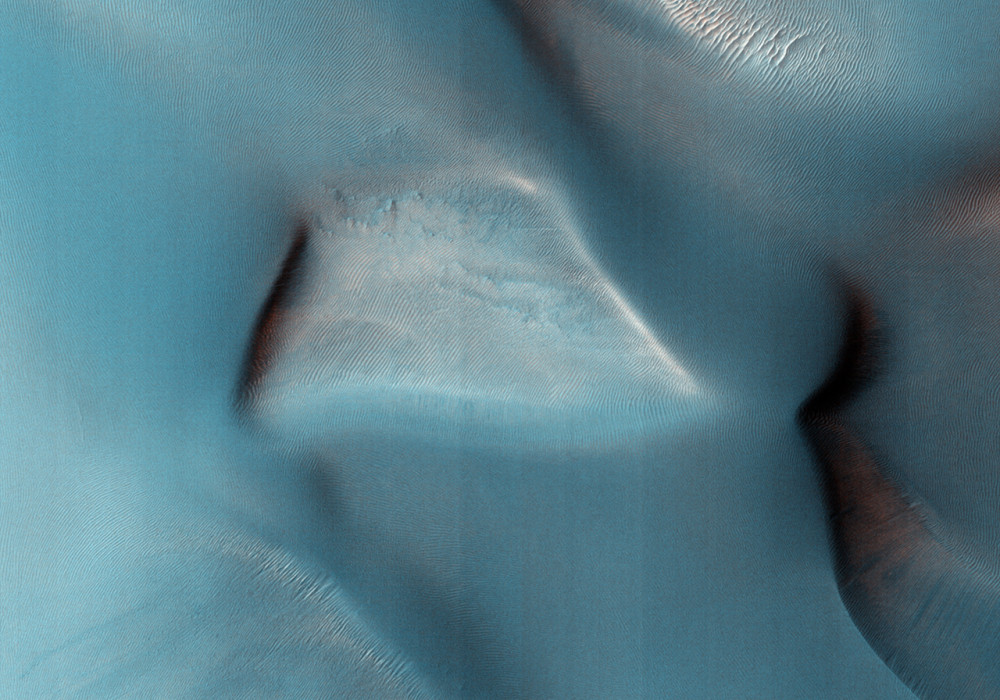Hellespontus is one of the regions on Mars where dust storms have often been seen to start. Winds have picked up dust which has then become trapped on the broad crater floors of the region.
Large quantities of dark sand form beautiful features on the surface . This example is in a crater at 23 degrees East, 52 degrees South. At HiRISE resolution these features also show sinuous flows which are distinctly different in morphology from slope streaks. The latter are probably the result of gravity-induced slippage.
It is unknown whether these flows are currently active or what the material is that initiates the flow. Although the dune fields are at high Southern latitude, the very dark surface makes them strongly absorbant and therefore warm in the Martian summer. Hence, water is a possible candidate but this remains to be investigated.
Written by: Nicolas Thomas (8 December 2010)
This is a stereo pair with PSP_005330_1275 .
More info and image formats at http://hirise.lpl.arizona.edu/PSP_004275_1275
Image: NASA/JPL/University of Arizona
